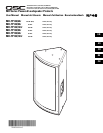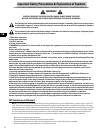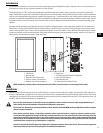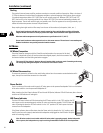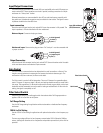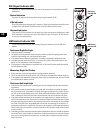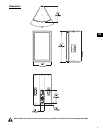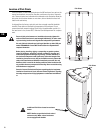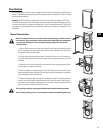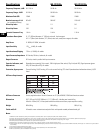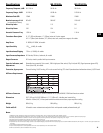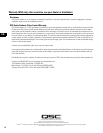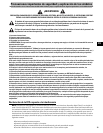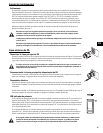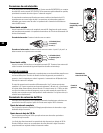
5
EN
Input/Output Connections
The active MD has a balanced 3-pin female XLR input marked IN and a male XLR output con-
nector marked OUT. These connectors are wired in parallel, enabling connection of multiple
enclosures in a “daisy-chain” fashion.
Balanced connections are recommended for less AC hum and interference, especially with
long cable runs. Unbalanced connections may be suitable for short cables. The signal's source
impedance should be less than 600 ohms.
Input connection
Insert the male XLR input into the jack marked IN. Ensure the connector is fully seated. The
input impedance is 12k ohm balanced or 6k ohm unbalanced.
Balanced inputs: Connect to the plug as shown.
Unbalanced inputs: Connect to the plug as shown. Pin 3 and pin 1 must be connected with
a jumper as shown.
Output Connection
Insert the female XLR connector into the jack marked OUT. Connect the other end of the cable
to the next down-stream audio device’s input connector.
Gain Control
The Gain control is recessed and can be adjusted with a small screwdriver or flat tool. Turn
the gain control clockwise to increase gain and counter clockwise to decrease gain. The
attenuation in dB (from maximum) is shown on the label.
The Gain control is marked in dB of attenuation. There are 21 detents for repeatable adjust-
ments. The upper 14 steps are about 1 dB each, and settings should normally be made within
this range. The range below -14 dB should not be used for normal program levels, as the input
headroom could be exceeded, but can be used for testing at reduced levels. At the minimum
setting, the signal is completely cut off.
Filter Select Switch
Above the Gain control is a small toggle switch that selects either Full Range operation or
applies a 100 Hz Lo-Cut filter to the system.
Full Range Setting
Use the Full Range setting for applications without subwoofers or dedicated low-frequency
enclosures.
100 Hz Lo-Cut Setting
Use the 100 Hz Lo-Cut setting for applications with optional subwoofers or low-frequency sys-
tems.
The two-way wedge will have its low-frequency content below 100 Hz filtered at 24dB per
octave, yielding less distortion at low frequencies and provide improved clarity in the mid-fre-
quencies.
Input (IN) and Output
(OUT) Connectors
Filter Select Switch
Gain Control
1= shield (ground)
3= minus (-)
2= plus (+)
1= shield (ground)
3= jumper to pin 1
2= plus (+)



